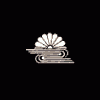Hi all!
Finally, my latest book project (in German) is now available in online bookstores.
It is called "Geschichten rund ums japanische Schwert" and deals with many legends,
myths, interesting stories and anecdotes around famous Japanese swords (for example
the provenance of many meitô) and smiths.
200 pages, A5, paperback, 52 s/w pics. Price 29,90 Euro.
It can be ordered via amazon.com:
http://www.amazon.de/Geschichten-rund-u ... 515&sr=8-2
or directly at Books on Demand:
http://www.bod.de/index.php?id=1132&objk_id=352732
Many thanks for your interest,
Markus
PS: Those who will meet me at one of our next meetings can also get a copy directly from me.




